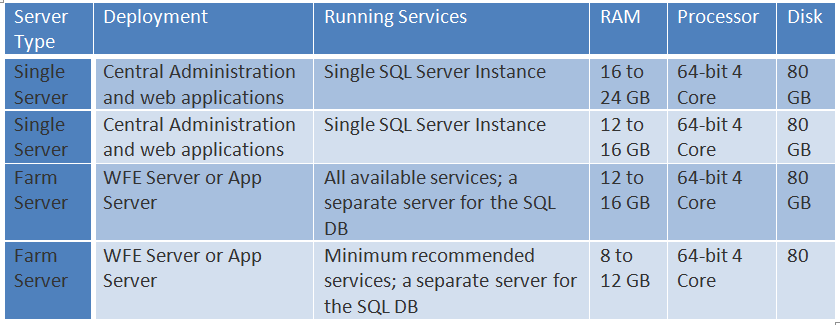With Microsoft officially announcing 2016 as the next version of SharePoint, it has generated a curiosity amongst developers and technology people across. The on premises version will be out for the public evaluation will be available by the 4th Quarter of this year; but before that here are some insights and System Requirements for SharePoint 2016.
Hardware Requirements:
According to the sources; the hardware requirements for SharePoint 2016 will be all same as SharePoint 2013. For SharePoint users, it’s going to be a big relief to know that they can still upgrade to SharePoint 2016 without any changes in their existing infrastructure.
The Basic Hardware requirement includes the following:
- 12 – 16 GB of RAM for the Farm Servers.
- 24 GB of RAM for the Single Server.
- 80 GB of free Disk Space.
In SharePoint 2016 the single server farms would not include SQL Server Express in the installation. So according to that standalone installations won’t be supported. Creation of single server farms will require independent installation of SQL Server besides SharePoint.
Based on the Ignite session from Bill Baer and his TechNet article; the following are the hardware investments recommended for installing SharePoint 2016.
Software Requirements:
Talking specifically about the software requirements, to run SharePoint 2016 farm, it is needed to update the software to either to Server 10 with .Net Framework 4.5.6 or Server 2013 R2 with .Net Framework 4.5.2.
Roles & Services:
SharePoint 2016 is using MinRole Topology. Here MinRole will allow the administrator to specify what kind of Server it’s going to be from the choices like Web Front End Server; a Search Server; an Application Server or a Distributed Caches. The administrator can select the type of the role the server in product & configuration wizard (psconfig.exe) & it will programmatically activate the available services for that selected role.
Any of the unwanted services running in that particular role or the required services stopped will result in health monitors to report that the server is out of compilance.
There are four discrete roles defined:
-
User Services : Any Request Coming from the user will be optimized for the new latency & these will be handled like sync client; one note; sandbox code; project; subscription; settings; profile; page rendering; excel services.
-
Robot Services (Application Services): These optimized for higher throughput and are not initiated by end user like search; provisioning; timer jobs.
-
Specialized Load: These are reserved services which are intended to be isolated from the other 3rd party services.
-
Caching Services: These are the supports for the distributed cache when load balances are requested from the end user.
Patching:
The improvements are done for patching. Patches available for installation will not affecting the users to access the farms. These can be installed in the middle of the day & can be installed anytime online without disturbing the work.











